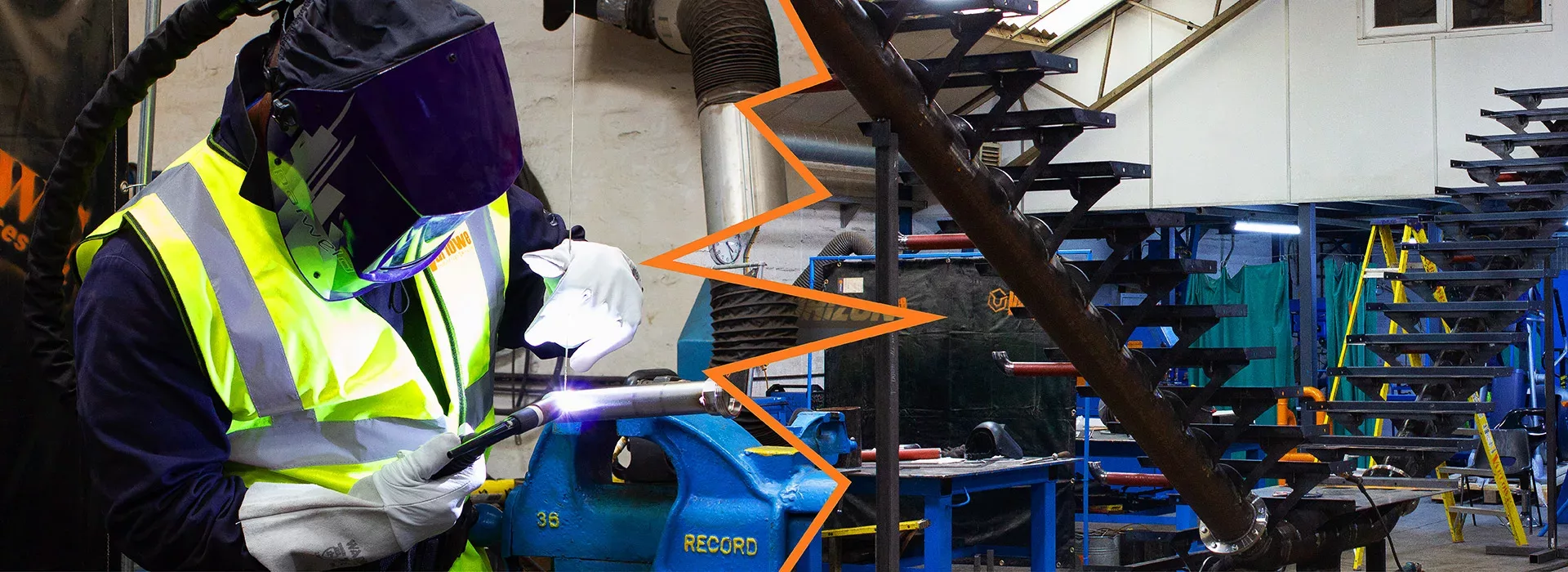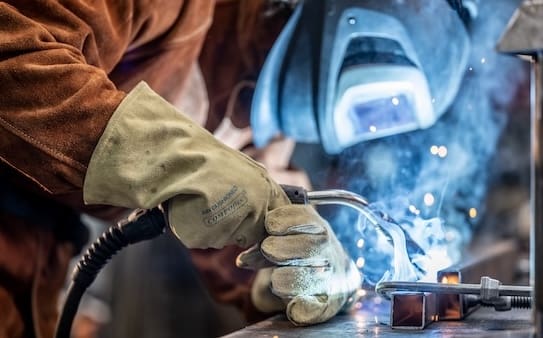All About Welding: Secret Insights Into Techniques and Ideal Practices for Success
Welding incorporates a variety of strategies, each fit for specific materials and applications. Recognizing these approaches, such as GMAW, SMAW, and TIG, is vital for achieving excellent outcomes. Additionally, the ideal tools and safety and security practices can not be neglected. As preparation and repairing play vital roles in the welding process, understanding these aspects can considerably boost the top quality of the end product. What are the key factors that guarantee an effective weld?
Comprehending Different Welding Methods
Welding methods encompass a range of techniques, each matched to certain applications and products. Among the most common strategies are Gas Steel Arc Welding (GMAW), Protected Metal Arc Welding (SMAW), and Tungsten Inert Gas Welding (TIG) GMAW, also known as MIG welding, is preferred for its rate and adaptability, making it optimal for slim materials. SMAW, or stick welding, is preferred for its simplicity and effectiveness in exterior environments, specifically with thicker steels. TIG welding supplies accuracy and control, making it ideal for complex work and non-ferrous metals (Montana Mobile Welding and Repair). Each method has its distinct advantages and factors to consider, enabling welders to pick the very best method based upon the task's demands, product kind, and preferred results. Recognizing these strategies is important for effective welding
Essential Welding Tools and Tools
While different welding techniques call for particular abilities, the ideal tools and tools are equally necessary for accomplishing top quality outcomes. Important welding devices includes welding equipments, which vary depending upon the method-- such as MIG, TIG, or stick welding. Safety equipment, including aprons, gloves, and helmets, guarantees security and convenience throughout the procedure. In addition, clamps and fixtures assist safeguard products in area, ensuring accuracy in welds. Consumables like welding rods, cord, and shielding gas are additionally important components that affect the top quality of the weld. Devices such as grinders and cutters assist in surface preparation and post-weld finishing, adding to a specialist outcome. Purchasing high-grade equipment eventually boosts the effectiveness and effectiveness of welding jobs.
Safety Practices in Welding
Proper safety practices are necessary in the welding market to safeguard employees from potential threats. Welders must put on ideal personal safety equipment (PPE), including safety helmets with appropriate shading, gloves, and flame-resistant apparel. Appropriate ventilation is important to lower exposure to damaging fumes and gases created during the welding process. In addition, employees must be learnt the appropriate handling of welding tools to avoid crashes. Fire safety and security actions, such as maintaining combustible materials far from the welding location and having fire extinguishers easily available, are essential. Regular examinations of devices and workspaces can aid determine potential threats before they bring about mishaps. By adhering to these safety methods, welders can produce a more secure working environment and lessen dangers connected with their trade.
Readying Materials for Welding
Preparing products for welding is an important step that considerably affects the top quality and stability of the final item (Belgrade Fabrication). Correct preparation includes cleansing the surfaces to get rid of impurities such as oil, corrosion, and dust, which can compromise the weld. Strategies such as grinding, fining sand, or making use of solvents are commonly utilized to achieve a tidy surface area. In addition, making certain that the products fit together well is vital; spaces can bring about weak welds. It's likewise essential to consider the positioning and positioning of the components, as this will certainly influence the simplicity of welding and the final end result. Selecting the ideal filler product and guaranteeing compatibility with the base metals is crucial for attaining solid, sturdy welds.
Tips for Achieving High-Quality Welds
Accomplishing high-grade welds calls for interest to detail and adherence to finest techniques throughout the welding procedure. Appropriate joint preparation is essential, guaranteeing surfaces are tidy and cost-free from impurities. Selecting the appropriate filler product and welding technique based on the base steels is critical for ideal bonding. Keeping regular travel speed and angle while welding can protect against flaws and promote uniformity. In addition, controlling heat input is crucial; too much warmth can lead to warping and weakened joints. If necessary, routinely examining the welds throughout the procedure allows for immediate changes. Lastly, using ideal post-weld therapies, such as cleansing and anxiety relief, can boost the sturdiness and integrity of the weld, eventually making sure an effective outcome.
Repairing Typical Welding Issues
Welding usually presents obstacles that can influence the top quality and integrity of the end product. Common concerns such as porosity, irregular weld beads, and overheating can develop, each calling for details fixing techniques. Recognizing these issues is necessary for welders to improve their abilities and accomplish excellent results.
Porosity Issues Discussed
Porosity can typically be overlooked, it stays a vital issue in welding that can jeopardize the honesty of a completed product. Porosity refers to the existence of little gas pockets within the weld bead, which can lead and deteriorate the joint to premature failing. This trouble normally occurs from pollutants, moisture, or inappropriate protecting gas insurance coverage during the welding process. To minimize porosity, welders need to confirm that the base products welding shops near me are tidy and dry, utilize appropriate securing gases, and maintain consistent welding parameters. Regularly checking the devices and environment can likewise aid identify possible concerns before they materialize in the weld. Dealing with porosity efficiently is necessary for achieving strong, sturdy welds that fulfill quality standards.

Inconsistent Weld Beans
Irregular weld grains can substantially affect the quality and stamina of a completed item. Various variables add to this issue, including inappropriate travel speed, inaccurate amperage settings, and irregular electrode angles. When the welder relocates too swiftly, a bead may show up slim and lack penetration, while moving as well gradually can trigger excessive accumulation. Furthermore, using the wrong amperage can cause either damaging or extreme spatter, both of which compromise weld honesty. The welder's strategy, such as inconsistent lantern motion, can also lead to uneven grain appearance. To alleviate these troubles, welders ought to concentrate on maintaining stable, regulated movements and making certain correct tools setups to attain harmony in their welds. Consistency is crucial to attaining solid and trusted welds.
Getting Too Hot and Warping Issues
Excessive warm throughout the welding process can result in considerable overheating and deforming issues, affecting the structural integrity of the workpiece. These problems usually manifest as distortion, which can endanger placement and fit-up, making additional assembly challenging. Aspects adding to overheating include the selection of welding specifications, such as voltage and take a trip rate, as well as the kind of material being welded. To alleviate these concerns, welders should keep constant travel speed and suitable warm input while keeping an eye on the work surface temperature. In addition, preheating or post-weld warm therapy can assist minimize stresses triggered by quick air conditioning - Belgrade Welding. Normal inspection and adherence to finest practices are crucial in avoiding overheating and ensuring the long life and integrity of bonded structures
Often Asked Concerns
What Are the Profession Opportunities in the Welding Sector?
The welding sector offers diverse job opportunities, including this post settings as welders, examiners, designers, and view instructors. Specialists can work in manufacturing, construction, aerospace, and auto industries, taking advantage of solid need and affordable incomes in various functions.
Just How Can I Boost My Welding Rate Without Sacrificing High Quality?
To boost welding speed without giving up high quality, one should exercise reliable methods, keep tools, optimize settings, and enhance hand-eye coordination. Routine training and seeking comments can likewise significantly add to attaining quicker, high-grade welds.
What Certifications Are Offered for Welders?
Numerous qualifications exist for welders, including those from the American Welding Society (AWS), the National Center for Building And Construction Education and Research Study (NCCER), and different industry-specific companies. These qualifications improve employability and demonstrate ability proficiency.
Exactly How Does Welding Influence the Characteristics of Metals?
Welding influences the properties of steels by altering their microstructure, which can cause modifications in stamina, firmness, and ductility. Heat input and cooling rates throughout the procedure significantly affect these product attributes.
Can I Weld Dissimilar Metals With Each Other?

Comments on “Top welding defects Montana Mobile Welding and Repair Belgrade Welding helps eliminate”